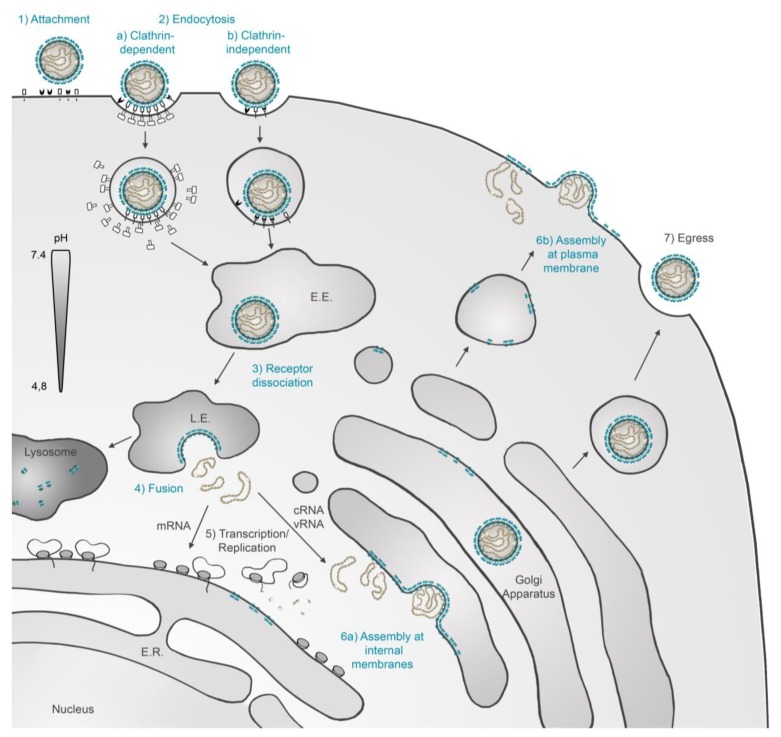Figure 2.
Functions of Hantavirus Envelope Glycoproteins during Virus Life Cycle. Once hantavirus particles attach to cell surface receptors by one, or both glycoproteins (1) they are uptaken by clathrin-mediated endocytosis (2a) or alternatively by other pathways that do not involve clathrin (2b). After virus particle uptake, the viral glycoproteins dissociate at one point from cellular receptors (3). Virus particles traffic down through the endocytic pathway until the low pH of endosomes, and possibly other cellular factors, trigger the Gc-mediated virus-cell membrane fusion process, releasing RNCs to the cytosol (4). After the transcription/replication of the viral genome and the synthesis of new viral proteins have taken place (5), the glycoproteins accumulate at internal membranes, where they can mediate virus assembly and budding (6a) and egress through the secretory pathway (7). Alternatively, new viruses may assemble and bud directly from the plasma membrane (6b). E.E. indicates early endosome, L.E. indicates late endosome.

